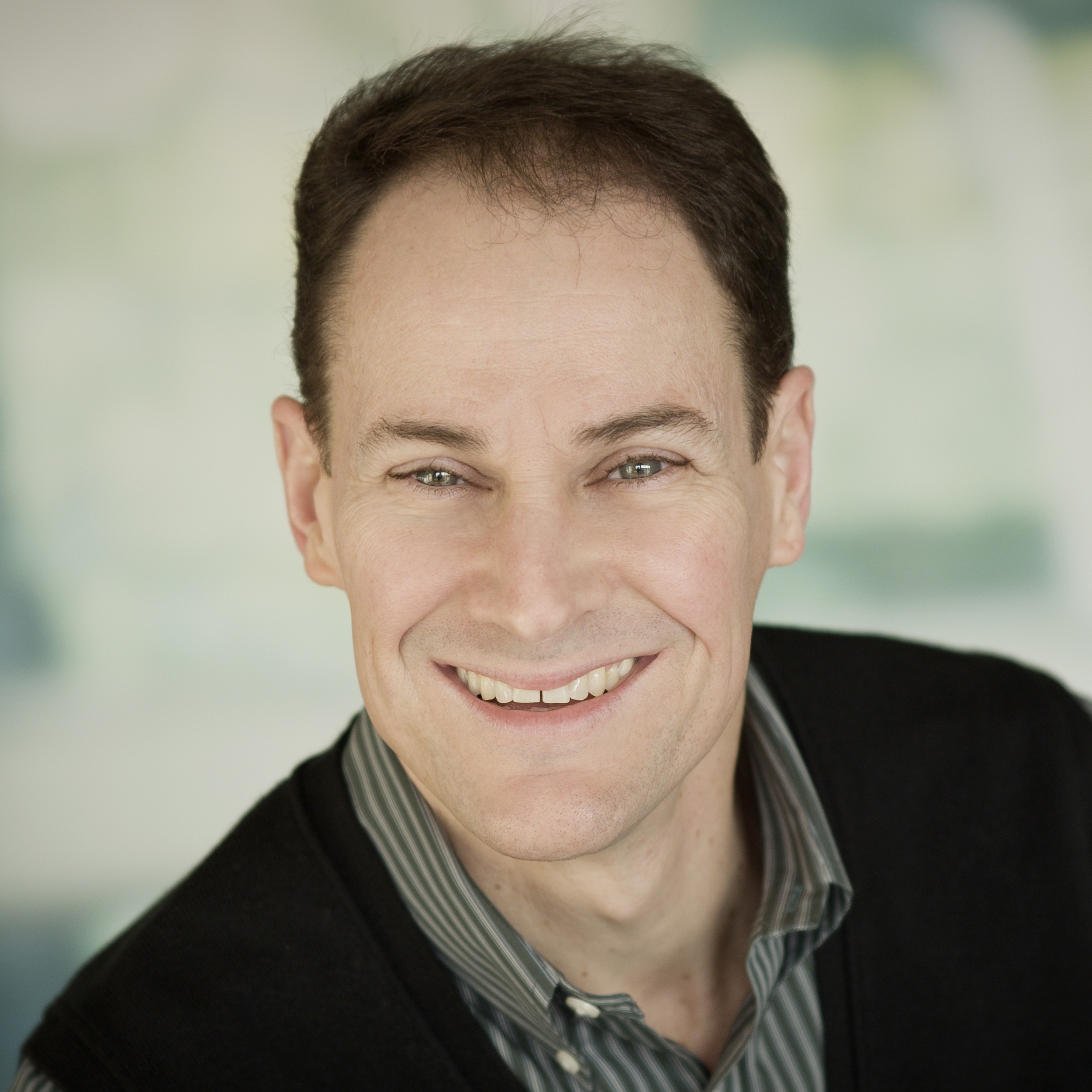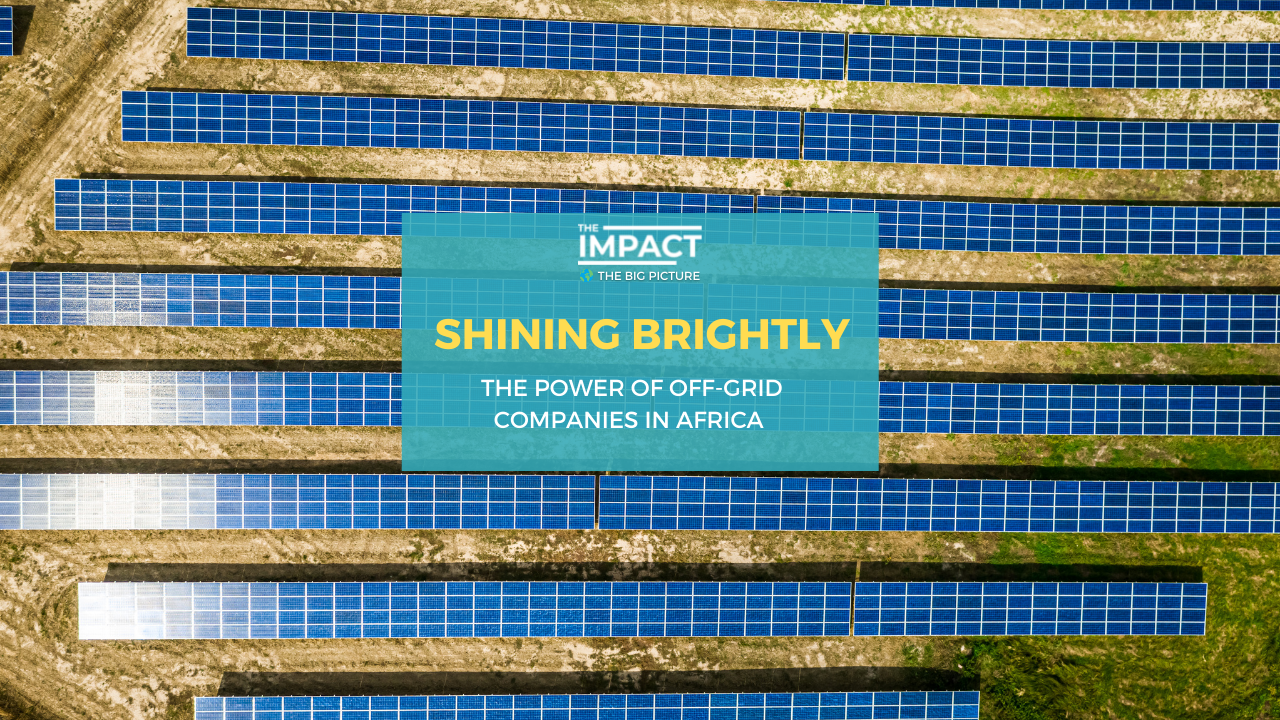We have nearly reached the end of the road for this four-part series on the importance of distributed solar solutions in sub-Saharan Africa. Our travels have taken us through the landscape of international debt financing and into the horizon of industry associations operating in this space. It seems only fitting that we end our journey by visiting two off-grid solar companies to learn how they benefit from these other organizations and discover their ultimate impact on the state of energy inequity.
Next stop - Daystar Power and Yellow:
Daystar Power is a distributed solar company operating in West Africa with a focus on the commercial and industrial sectors providing Solar-as-a-Service (100% solar power) and Power-as-a-Service (hybrid power with battery storage) products. We spoke with Jasper Graf von Hardenberg, Co-Founder and Group CEO.
Yellow is an energy and technology company also operating primarily in West Africa, but with a focus on the residential space, providing “last mile distribution” of off-grid solar. We spoke with Paula Macnab, Head of Brand and Communications at Yellow.
Why Daystar Power?
Jasper and his co-founder, Christian Wessels, worked in Nigeria for several years and noticed two linked issues constraining the growth of local companies – unreliable grid access leading to the use of expensive on-site power generation to fuel operations.
DayStar Power was formed to provide solar and hybrid power solutions to reduce the cost and emissions of these fossil fuel generators with a focus on West Africa. Jasper noted that some companies in the region required a degree of diesel generation due to continuous load requirements, even with renewable energy sources in place. However, the diesel generators in place were often grossly oversized resulting in unnecessary costs and emissions. DayStar Power helped these companies strike a balance between diesel and solar/batteries.
Why Yellow?
Yellow’s founders, Michael Heyink, previously a private equity analyst, and Maya Stewart, a local entrepreneur and energy equity advocate from Malawi, both saw an opportunity to improve the dismal 11% electrification rate in the region.
Yellow was formed to address the energy and economic inequity in West Africa at the residential level with a unique approach. The goal was to provide a low-cost solar power solution for residential customers at the same price point as their current fuel sources – candles and paraffin. By providing lockable mobile phones as part of the solution package, the founders introduced a mechanism to incentivize on-time payments with a by-product of establishing responsible credit for their customers.
How do you supercharge your impact on the industry and your customers?
Jasper explained that Daystar Power has local teams that can deliver solutions end to end, relying very little on outside contractors or services. In addition, their solutions monitor all aspects from solar irradiance to diesel tank levels to allow for remote switching between solar, battery, and generator as the need presents itself, reducing the cost and challenge of site visits.
He highlighted the impact Daystar Power has on its customers through the example of Shaldag Limited. Shaldag is a fish farm and processing facility in Nigeria. Fish farms require a constant power supply to properly oxygenate the water or risk the effects of hypoxia. If power is unavailable for too long, fish can die, leading to roughly 3-5 months of lost revenue. Shaldag was also powered solely by diesel generation due to a lack of grid access. DayStar was able to cut the need for diesel by 50% through their Power-as-a-Service solution and still provide the reliability necessary for ongoing operations.
Paula noted that Yellow started with Google Sheets to manage operations and customers. However, as business exploded, automation was introduced at a rapid pace leading to the creation of Ofeefee, a mobile app and platform that consolidates sales force operations, customer credit assessment, product inventory, and customer care. This home-grown technology has been developed with their unique customer persona in mind, designed to support and elevate their low-income customers in locales that many of Yellow’s competitors chose not to operate in.
In addition, Yellow sales agents act as independent local contractors who marry their unique knowledge of the locales in which they work with the “last-mile” focus of the Ofeefee app. Yellow creates a culture that further incentivizes its agents through a combination of gamification features in Ofeefee and prizes. This introduction to life as an independent contractor has led to many of these agents owning side businesses, demonstrating a capacity for entrepreneurship that benefits all in the community.
What kind of support have you received from other organizations?
Jasper noted that Daystar Power is a member of GOGLA but that they do not have a great deal of interaction with the organization. As far as funding goes, they have received funding from both Trine (€500k) and SunFunder (up to $4M). Daystar Power operations include the challenges of synchronizing three activities: acquiring customers, getting financing, and delivering services. Debt funding has been critical in addressing the second activity. Jasper notes that these two organizations operated with particularly efficient due diligence enabling Daystar Power to proceed with expansion plans more quickly.
Paula was not actually familiar with GOGLA or AMDA, which makes sense as these organizations tend to focus on solar companies in the C&I sectors. However, Yellow has raised a total of $4M in equity and $20M in debt funding, with some undisclosed amounts coming from both Trine and SunFunder. While residential off-grid solar may represent the long tail of the industry, clearly the investment community recognizes the value of supporting growth in the residential sector.
What has been your impact on the state of energy, decarbonization, and local economies?
Many hopeful local companies saddled with diesel generation costs due to unreliable grids cannot even operate in this region. The deployment of Daystar Power solutions has led to reductions of at least 20% in energy costs and a 50% reduction in diesel consumption for its customers. These reductions help to level the playing field allowing these companies to compete more effectively in local and global markets and provide the previously noted hopeful companies a roadmap to reasonable operational costs.
These reductions in carbon emissions and fuel costs lead to improvements in quality of life, energy poverty, and economic inequity in the companies, their employees, and the communities they serve. The simple ability for some of these businesses to exist and persist locally – another example pointed to glass manufacturing that simply cannot operate without reliable energy – reduces imports, increases exports, and leads to more self-sufficient and prosperous communities.
Michael added that Yellow recently contracted with its 200,000th residential customer. Hitting this milestone means that Yellow has provided access to clean electricity for nearly 1 million people who previously had none.
As Paula noted, the impact on economic inequity can be witnessed in the success of the independent sales agents, who often become owners of additional businesses in their communities. While this might not represent the scaled job creation that productive use of solar deployments drives, it represents a change in overall socio-economic outlook and opportunity for all in the community.
What is next for Daystar Power?
Daystar Power currently has 300 systems installed (over 26MW of capacity) for around 25 customers. With current annual revenues of around $10M, they provide pay-as-you-go plans with no upfront costs to their customers.
In terms of the project scale, Jasper contrasted Daystar Power deployments of around 100 KW of capacity just two years ago with plans as large as 6 MW this year.
Daystar Power also plans to power entire sites beyond just solar for its largest clients, effectively moving from limited Solar-as-a-Service to more expansive Power-as-a-Service solutions.
Lastly, Jasper noted plans to expand not only further into West Africa but into East Africa starting in 2023. Strategic planning for this growth is underway in 2022 in earnest.
What is next for Yellow?
Whilst Yellow continues to maintain and grow its operations in Malawi and Uganda, Yellow has, in parallel, launched test projects using skeleton structures to speed up the data collection process as Yellow enters new markets, specifically Zambia and Rwanda.
To Michael’s earlier point, Yellow has achieved great success with their 200,000th customer. However, they have great plans for customer growth, with a commitment to improving the standard of living for 10 million African homes by 2030.
Closing thoughts on the series
We initiated this series with hopes of shining light on the power of distributed solar to help address issues of energy inequity and high carbon emissions for the people of sub-Saharan Africa. We have discovered several organizations, support systems, and investors looking at the problem from a very holistic lens. They seek to tackle decarbonization and energy poverty head-on by also addressing the economic inequity prevalent in this region. This approach effectively creates the context in which climate change solutions often thrive and grow; climate change linked to economic opportunity.
About The Author

Brian most recently served as the CTO / CPO for PlanIT Impact, a SaaS platform focused on maximizing building resource (energy, water and stormwater) to cost performance for architects, engineers, and construction professionals (AEC) as well as building owners / operators. A life long advocate for climate change and environmentalism, his journey began most profoundly with the publishing of Al Gore’s “An Inconvenient Truth” and its subsequent activity culminating in the Live Earth concert. Since that pivotal event, Brian has followed climate change research closely with a particular interesting in environmental impacts, such as rising sea levels, shrinking biodiversity and deforestation. Currently, he is very interested in US-based efforts to drive consumer electrification, and the policy changes that need to occur to affect both supply and demand of renewables. Brian holds a BS in Computer Science from Trinity University and an MBA from University of Missouri-Kansas City Bloch School of Business.

